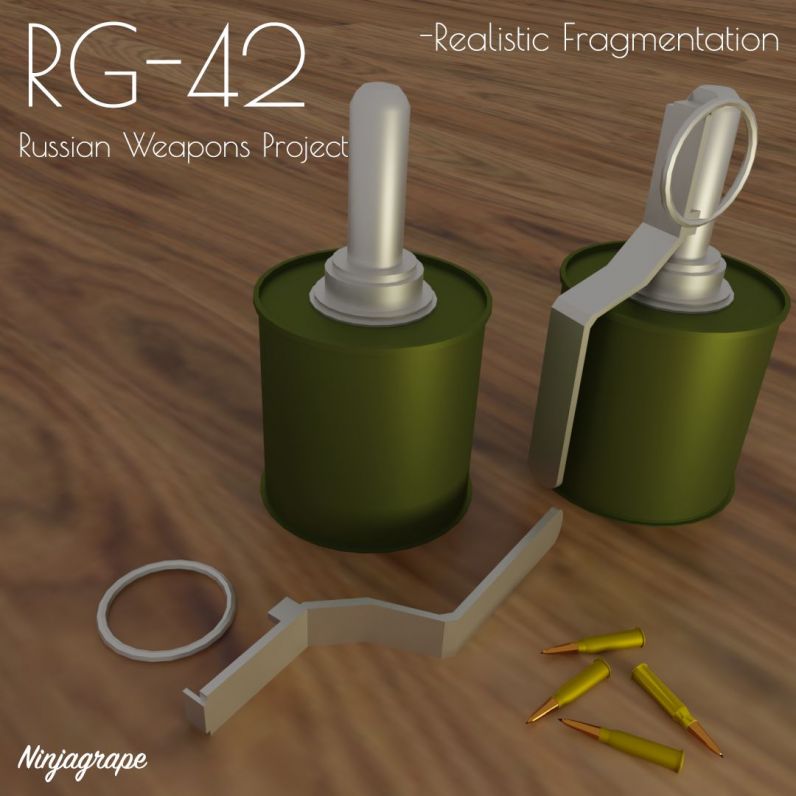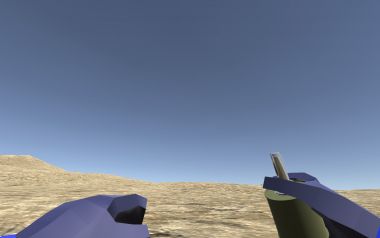Mod «RG-42 (Russian Weapons Project)» for Ravenfield (Build 20)

The RG-42 infantry hand grenade was a hastily developed anti-infantry weapon brought along by Soviet industry during the thick of the fighting of World War 2 (1939-1945). It was developed specifically to succeed the complex and expensive RGD-33 series detailed elsewhere on this site. The RGD-33, developed in the pre-war years of the 1930s, did not lend itself well to war time production practices and budgets and - with the German invasion of the Soviet Union in June of 1941 taking over swathes of Soviet territory (including directly threatening Soviet industry) - a more economical measure was in order. The RG-42 saw consistent frontline service with Soviet forces until its replacement, the egg-shaped RGD-5, was secured in 1954. Despite this, the sheer number of available RG-42 grenades ensured it would maintain a healthy service life with or without the direct support of the Soviet Army. As such, it was used by the North Korean Army in the Korean War (1950-1953) and was copied outright by Chinese industry as the "Type 42" for local use. Warsaw Pact players Poland and Ukraine both relied on the grenade as well and were, rather amazingly, actively using them into the 2010s. Production of RG-42 grenades spanned from 1942 until about 1954.
File info
- Added by: Roman
- Author: Ninjagrape
- Mod version: 22.07.20
- File format: ZIP
- File size: 10.2 mb
- Source: Go to




